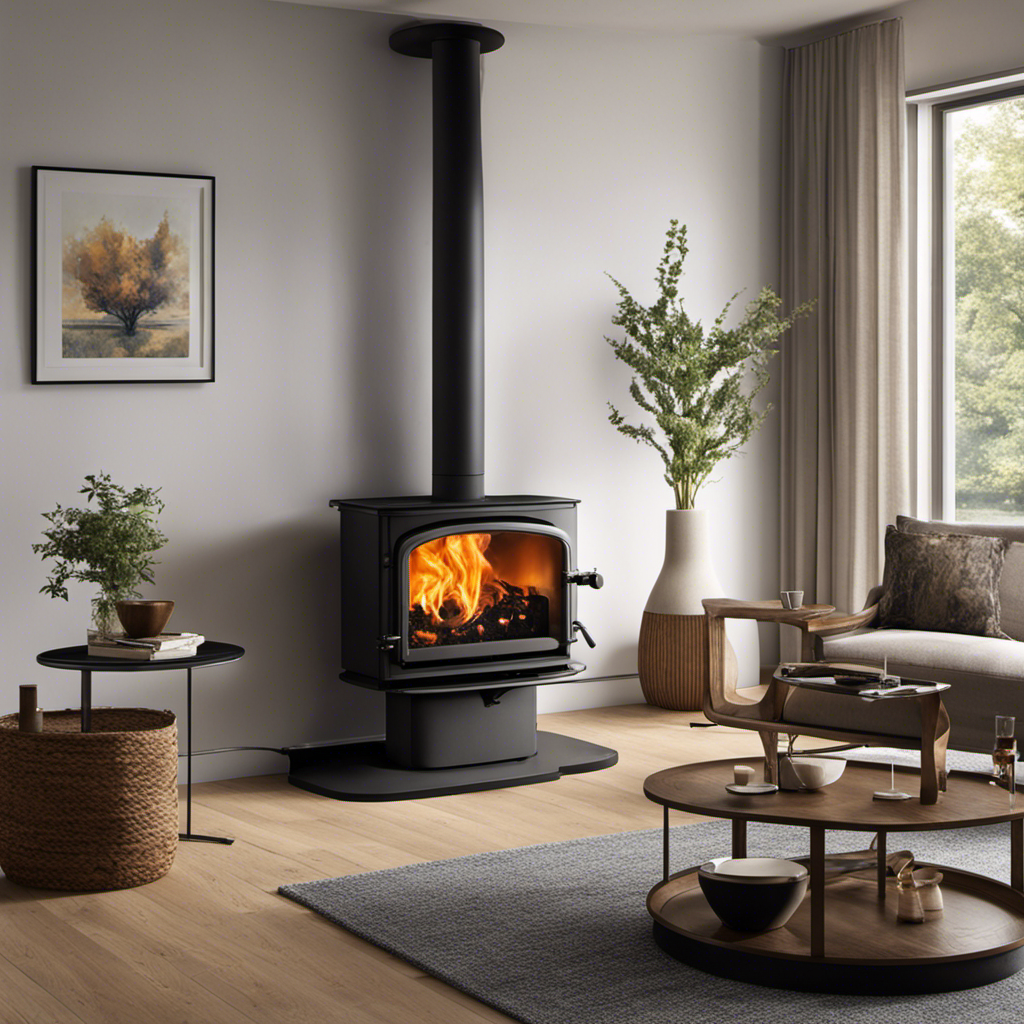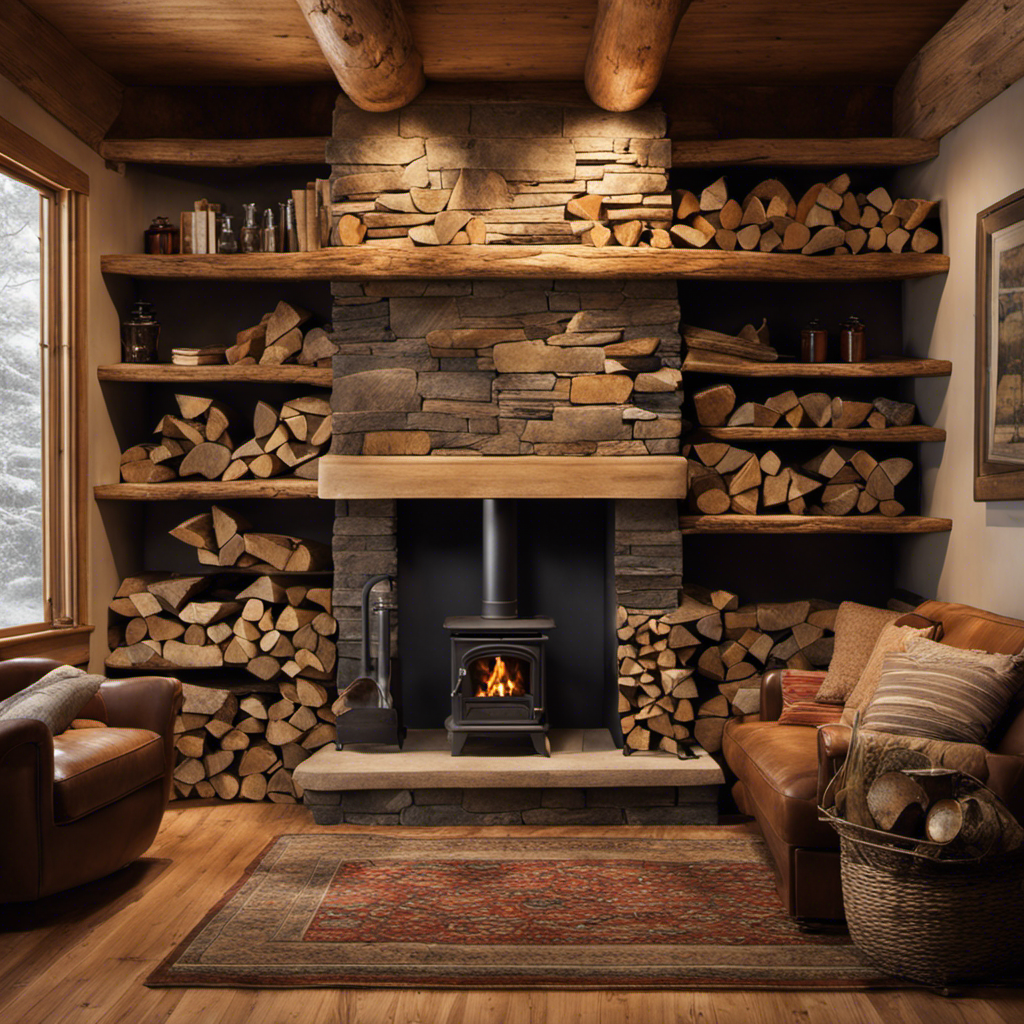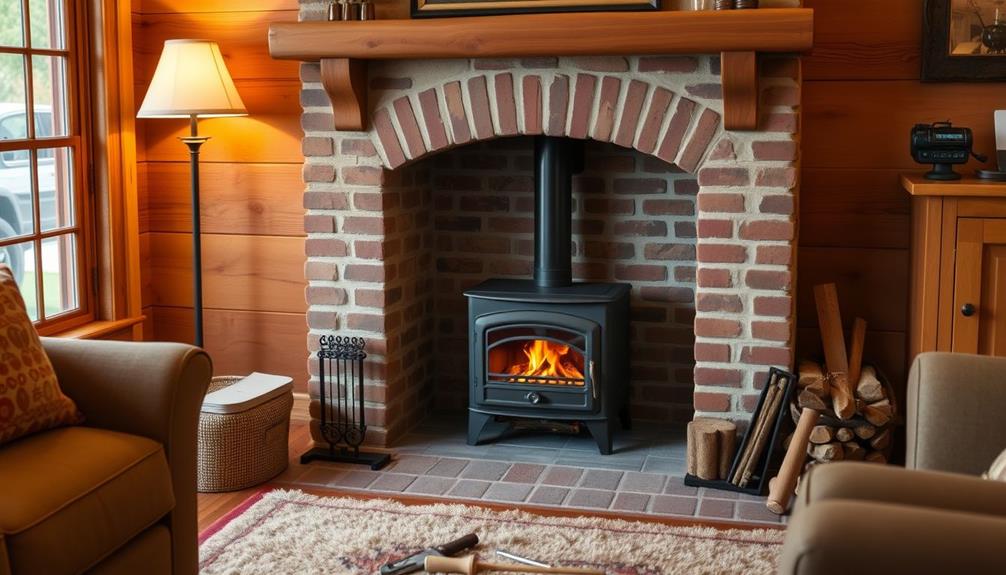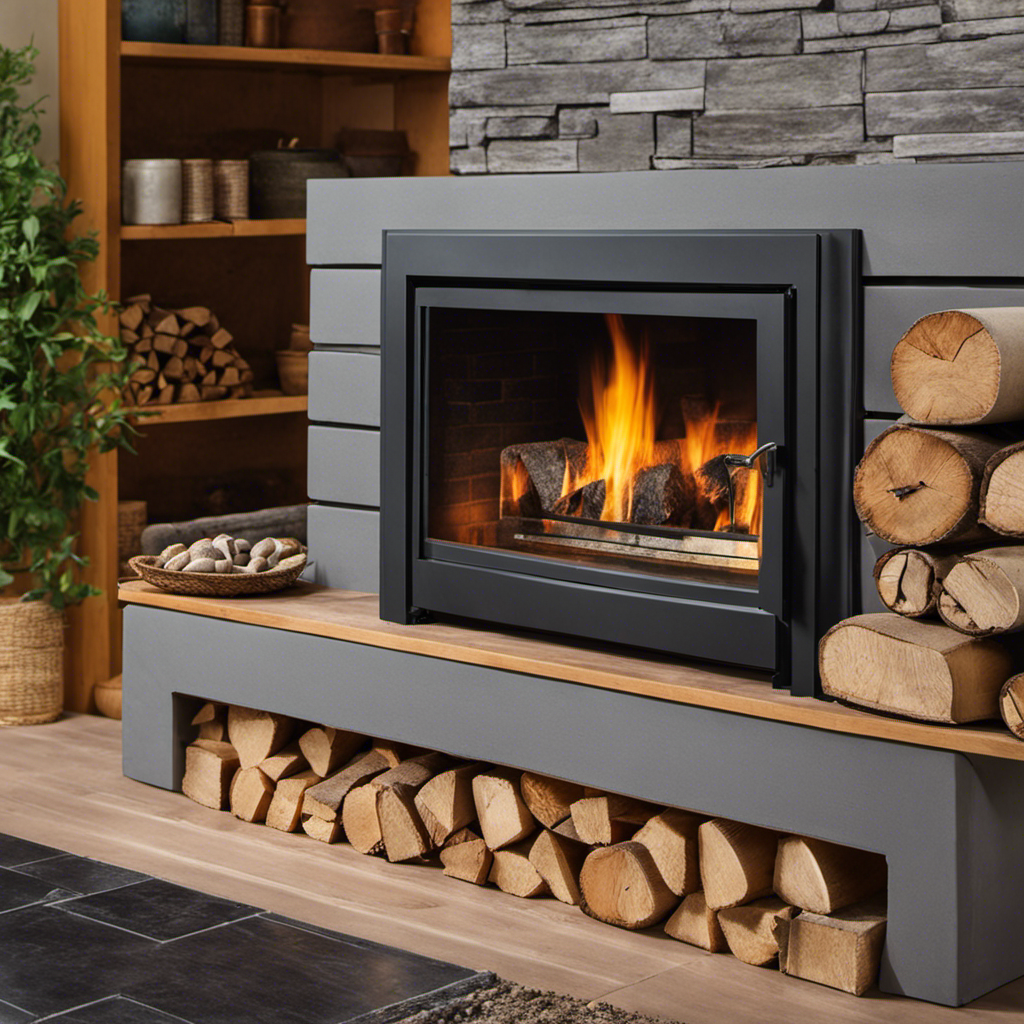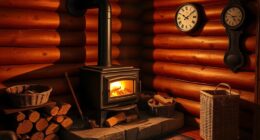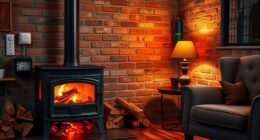So, your wood-burning stove is making your house feel like a sauna, huh? Don’t worry, folks, because I have the perfect solution for you all.
In this article, I’m going to show you exactly how to cool down that fiery beast and keep your living space comfortable. From adjusting the airflow to implementing emergency cooling measures, I’ve got all the tips and tricks you need.
So sit back, relax, and let’s tame that scorching stove together.
Key Takeaways
- Open windows to allow fresh air flow and reduce temperature.
- Turning on fans enhances airflow and aids in cooling.
- Overheating poses risks to individuals and equipment.
- Emergency cooling measures are crucial for preventing overheating.
Understanding the Heat Source
I can’t believe how hot the wood stove gets, I need to understand the heat source better.
As someone who’s been using wood stoves for many years, I’ve learned a thing or two about heating efficiency and the importance of using proper firewood.
When it comes to heating efficiency, it’s crucial to choose a wood stove that’s properly sized for the space you want to heat. A stove that’s too large will generate excessive heat, while a stove that’s too small will struggle to adequately warm the area.
Additionally, using proper firewood is essential for optimal performance. Dry, seasoned hardwood like oak or maple burns hotter and longer, providing more heat with less smoke and creosote buildup.
Controlling Airflow and Draft
To ensure optimal heating efficiency, it’s important to properly control the airflow and draft in your wood stove. Maintaining the optimal temperature in your wood stove is crucial for both comfort and safety. When the airflow isn’t controlled properly, it can lead to inefficient burning, excessive smoke, and even the risk of a chimney fire.
Regular maintenance is essential to keep your wood stove in good working condition. This includes cleaning the chimney and flue regularly to prevent blockages that can hinder airflow. It’s also important to inspect and clean the air vents, gaskets, and seals to ensure they’re functioning properly.
Adjusting the Damper Settings
One can easily adjust the damper settings to regulate the airflow in the wood stove. By manipulating the damper, you have control over the temperature inside your wood stove.
If you find that the stove is burning too hot, simply close the damper partially to reduce the airflow. This will help lower the temperature and prevent the wood from burning too quickly.
On the other hand, if you’re having trouble getting the fire going or if it’s not generating enough heat, open the damper fully to increase the airflow. This will allow more oxygen to reach the fire, helping it burn more efficiently and produce more heat.
Adjusting the damper settings is a crucial step in troubleshooting temperature-related issues with your wood stove.
Using Heat Shields and Insulation
Using heat shields and insulation can greatly improve the efficiency of a wood stove by reducing heat loss and directing the heat towards the desired area.
Heat resistant materials, such as ceramic tiles or metal sheets, can be used as heat shields to protect nearby walls or furniture from the intense heat generated by the stove. These shields create a barrier that prevents heat from escaping into the surroundings, ensuring that more heat is directed towards heating the room.
Additionally, proper insulation around the stove can further enhance its efficiency by minimizing heat transfer to the surrounding walls and floors. This can be achieved by using materials like fiberglass or fire-resistant foam insulation.
It’s important to ensure that there’s proper ventilation in the room to prevent any buildup of carbon monoxide or other harmful gases. Regular maintenance and inspection of the stove and chimney is crucial to ensure safe operation.
Implementing Emergency Cooling Measures
I can quickly implement emergency cooling measures by opening all the windows and turning on the fans. When it comes to preventing overheating, it’s crucial to have effective emergency cooling methods in place.
Overheating can pose serious risks to both individuals and equipment, so it’s essential to act swiftly and decisively. By opening the windows, fresh air can flow in and help reduce the temperature in the space. Turning on the fans will further enhance the airflow and aid in cooling down the area.
These emergency cooling measures are simple yet effective, and they can make a significant difference in preventing overheating. It’s important to have a plan in place and be prepared to take action when it comes to emergency cooling.
Frequently Asked Questions
Can I Use a Fan to Cool Down a Wood Stove?
Yes, you can use a fan to cool down a wood stove. However, there are also alternative methods that can be more effective. Consider using a blower or an air circulator for the best cooling options.
What Are Some Common Mistakes to Avoid When Cooling Down a Wood Stove?
Common mistakes in cooling down a wood stove include closing the damper too quickly, neglecting to remove ashes, and using improper cooling techniques. It’s important to follow proper procedures to avoid potential hazards.
Is It Safe to Leave the Wood Stove Unattended While Cooling It Down?
It’s important to follow safety precautions and best practices when cooling down a wood stove. Leaving it unattended while cooling is not recommended as it can lead to potential hazards.
How Long Does It Typically Take for a Wood Stove to Cool Down Completely?
Typically, a wood stove takes a few hours to cool down completely. However, the cooling time may vary depending on factors like the size of the stove and the type of materials used. Effective cooling methods include closing the vents and removing any remaining fuel.
Can I Use Water to Speed up the Cooling Process of a Wood Stove?
Using water to cool down a wood stove can be effective, but it’s important to do it safely. Alternatives to speeding up the cooling process include removing the hot coals and ashes and opening windows or using fans to increase airflow.
Why Does a Wood Stove Need a Flue?
A vital component of wood stoves, the flue function in wood stoves is essential. The flue serves as the passageway to release harmful byproducts like smoke and gases generated during combustion. It helps maintain proper airflow, ensuring efficient burning and preventing the buildup of hazardous substances inside the stove.
Conclusion
In conclusion, mastering the art of cooling down a wood stove is crucial for maintaining a comfortable indoor temperature. By understanding the heat source and controlling airflow, you can effectively regulate the stove’s temperature.
Adjusting damper settings, using heat shields and insulation, and implementing emergency cooling measures are all valuable techniques that can make a significant difference.
So, the next time your wood stove starts blazing, remember these tips and cool it down like a pro, ensuring a cozy and safe environment.
Growing up surrounded by the vast beauty of nature, Sierra was always drawn to the call of the wild. While others sought the comfort of the familiar, she ventured out, embracing the unpredictable and finding stories in the heartbeat of nature.
At the epicenter of every remarkable venture lies a dynamic team—a fusion of diverse talents, visions, and passions. The essence of Best Small Wood Stoves is crafted and refined by such a trio: Sierra, Logan, and Terra. Their collective expertise has transformed the platform into a leading authority on small wood stoves, radiating warmth and knowledge in equal measure.

